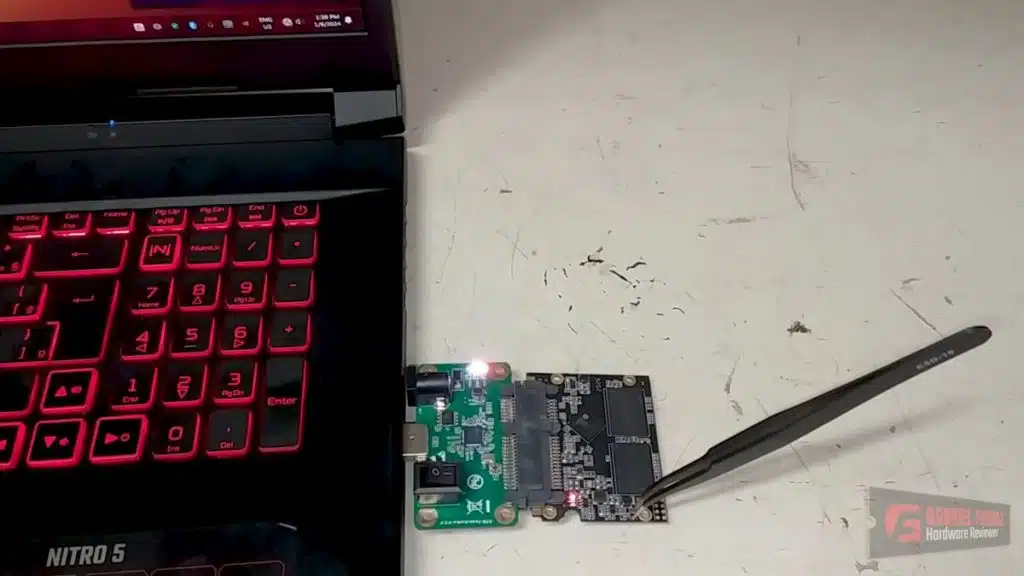
Computer Engineering Graduate Gabriel Ferraz has shown in detail that a SATA SSD can be overclocked for improved random read/write speeds. Gabriel Ferraz (Detetive Virtual de SSDs) runs a hardware review channel on YouTube and has performed an interesting experiment most wouldn’t normally think of trying. In fact, the title of the video jokingly includes “. . .doable at Home! (DON’T TRY THIS AT HOME THOUGH)”.
The experiment was done just to see what might be possible and is not intended to be a guide for revolutionizing the use of older tech in the enthusiast community. It involves a skillset one would expect from a computer engineering graduate that most consumers probably don’t have and who would likely damage their equipment or possibly worse, injure themselves.
Software:
On the software end of things, Gabriel used a suite of programs commonly used for testing and benchmarking storage drives which includes IOmeter, PCMark, 3DMark, CrystalDiskMark, ATTO Disk Benchmark, and Diskbench, to name a few. An RZX Pro 240GB DRAM-Less drive is used that has a Silicon Motion SM2259XT2 controller featuring an ARC 32-bit processor which is factory underclocked at 425 MHz. Custom firmware was then made and loaded onto the controller allowing for an overclock of 500 MHz. This moderate clock rate increase provides a much more pronounced effect on the NAND memory.
Per Tom’s Hardware:
“Ultimately, he got the controller stable at 500 MHz, increasing by 17.6%. But the NAND receives a much more significant boost to 400 MHz, bringing in a 106% increase.”
Gabriel also used a JMS578 bridge controller and explained that during testing the SSD operates at 40°c when using stock settings but while overclocked, climbs to 45°c. Still not too bad given the increased clock rate. Interestingly enough, even though latency was seen to have been lowered by just a little bit, the biggest gain was not with sequential read/writes but instead with random read/writes. Gabriel showed that random read/write speeds could be increased by as much as 27% with sequential speeds hovering around 10%. In terms of real-world performance, this didn’t amount to much. Game load times and simulated content loading in Adobe Premiere Pro 2021 were not noticeable, and ultimately, even by maintaining thermal thresholds, the SSD was toast as it died during the experiment.
